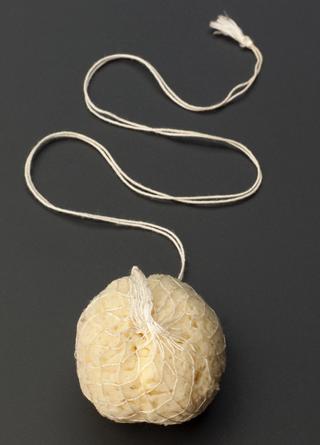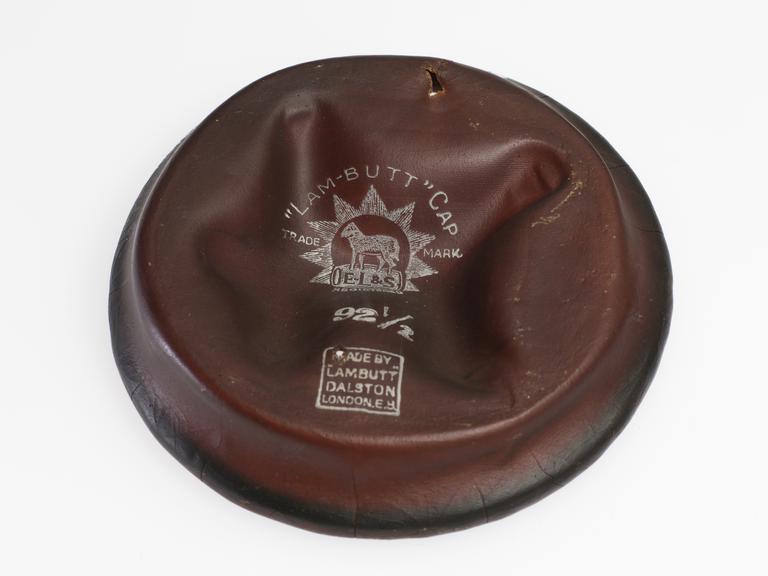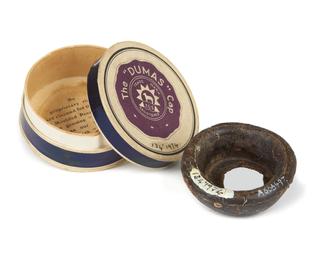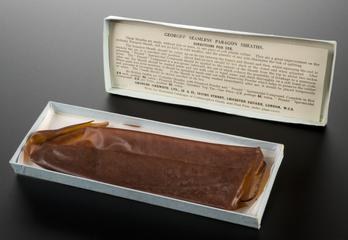

Rubber diaphragm, size 99 1/2, by Lambutt, Dalston, London, E8, England, 1950-1954.
A diaphragm is a barrier contraceptive. It sits over the cervix and acts as a barrier to sperm entering the uterus. They come in different sizes and are initially fitted by a physician. They are used in conjunction with a spermicidal cream to kill sperm and inserted by the woman before sex. This size 99 1/2 diaphragm dates from the 1950s. It has a flexible steel rim with a rubber covering. It was made by Lambutt (Dalston) in London. The diaphragm was invented by German gynaecologist Dr Willhelm Mensinga in 1842. It was widely used in Europe in the early 1900s. However, strict importation laws meant Mensinga diaphragms had to be illegally smuggled in the US by birth control pioneers such as Margaret Sanger (1879-1966).
Details
- Category:
- Obstetrics, Gynaecology & Contraception
- Collection:
- Sir Henry Wellcome's Museum Collection
- Object Number:
- A626844
- Materials:
- rubber (unidentified), steel (metal) and complete
- Measurements:
-
overall: 95 mm, .07kg
- type:
- diaphragm
- credit:
- Marie Stopes Memorial Foundation




